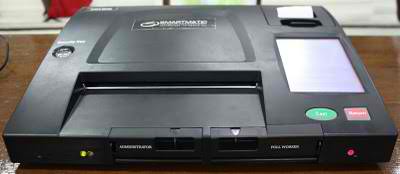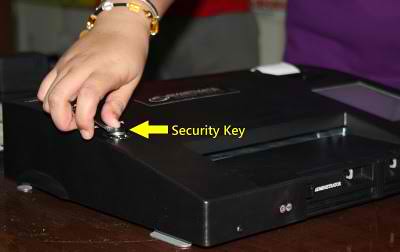What is more worrisome is if the sinister scenario that Lim raised is a camouflage for an operation just like what the operators of Gloria Arroyo did in the 2004 elections to ensure her “winning” the presidency against Fernando Poe, Jr.
Lim was one of the lawyers of the 2010 Aquino-Roxas team and it is well known that Mar Roxas, the Liberal Party’s presidential candidates in the 2016 elections, pushed for his appointment in the Commission on Elections.
At the budget hearing for the Comelec last week at the House of Representatives, Lim revealed they “have received intelligence reports that there may be an attempt to sabotage the elections by China… I feel personally that the biggest threat to the 2016 elections is China.”
He said the information was relayed to him by a commissioner who had a contact in the military which prompted the Commission to request Smartmatic, the supplier of the ballot-reading Precinct Count Optical Scan (PCOS) machines, to transfer to Taiwan the production of new 79,000 optical mark reader (OMR) units to be used in the 2016 elections.
Without commenting on the security aspect, Smartmatic agreed to Comelec’s request.
Cesar Flores, president of Smartmatic Asia Pacific said, “We have agreed to the said request despite the fact that such a transfer will force us to shoulder an additional cost amounting to 5 percent of the total contract price. Moreover, although both facilities in China and Taiwan operate under the strictest international standards and both are capable of manufacturing the machines to specifications, we respect the Comelec’s decision and have therefore acceded to the request.”
It’s an information so important that involves the country’s national security and yet Lim said he didn’t inform the President about it.
That’s why, when asked about Lim’s expose, Presidential Communications Secretary Herminio Coloma Jr. said the President was not aware of any plot by China to sabotage next year’s elections.
“It is best that Comelec explain this matter as we have no information on the point mentioned by Commissioner Lim in the House hearing, “ he said.
It’s not only Malacanang that was clueless about what the Comelec Commissioner told the public about something that has grave security and foreign relations implications.
The military, which is the supposedly the source of the information, knew nothing about it.
AFP spokesperson Restituto Padilla issued this statement:”This is the first time that the AFP received information on the matter and after checking with our concerned staff offices, we found out there is no report in our files to substantiate this. Hence, we could not comment on an issue we know nothing about.”
The Chinese Embassy in Manila, as expected, dismissed Lim’s expose as “ totally groundless and a sheer fabrication.”
“China has always adhered to the principle of non-interference into other countries’ internal affairs, ” Li Lingxao, the embassy spokesperson said.
Lim related his concern to the suit by the Philippines against China over the West Philippine Sea territorial conflict before the United Nations Arbitral Tribunal. He fears that if the Philippines wins the case, China might decide on trade embargo.
“So any product made in China will not be coming in the Philippines. Walang machine. There’s a lot of possibilities,” Lim said.
No one can accuse Lim of not thinking far ahead and about all possibilities.
We imagine Lim also has thought of the possibility that Mar Roxas,his former principal, would not get enough votes to realize his dream of becoming the next Philippine president.






